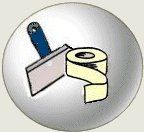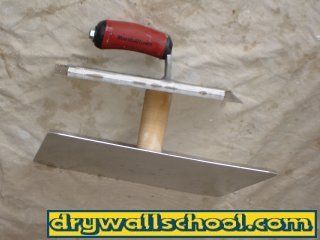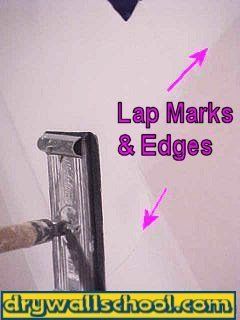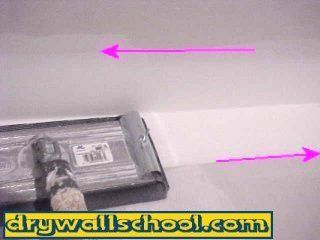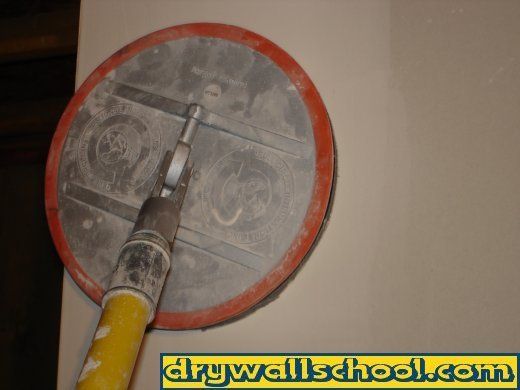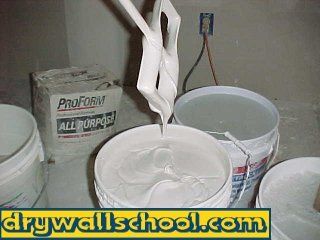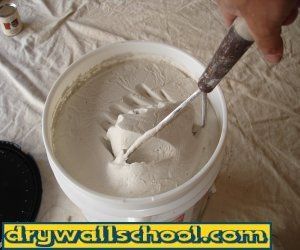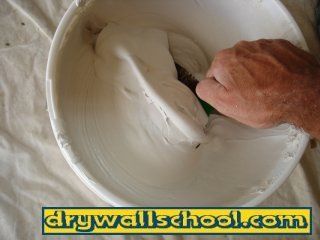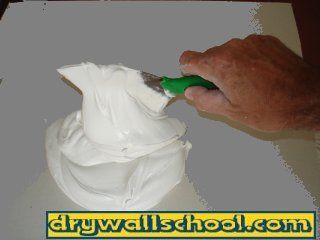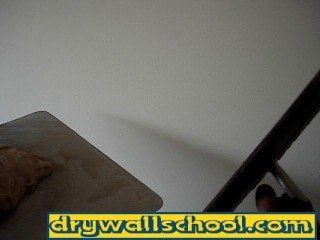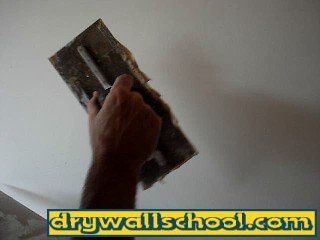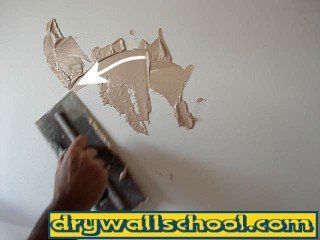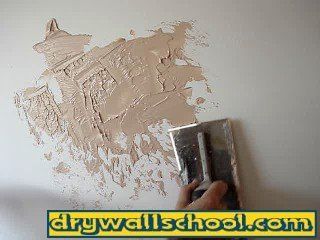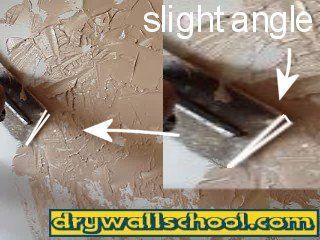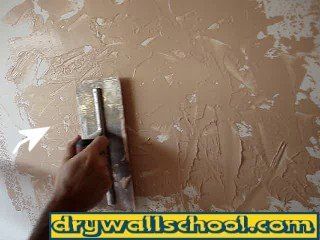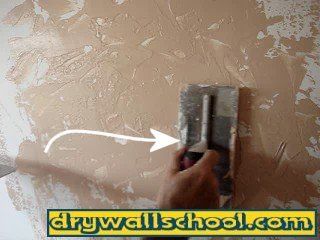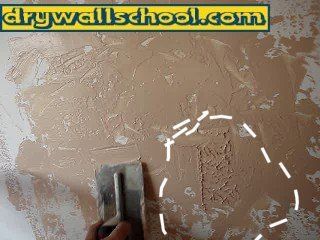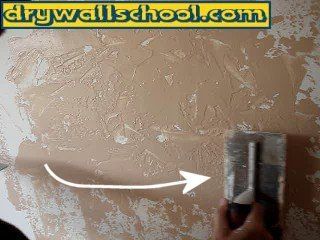HOW TO DO A "MUD TROWEL TEXTURE"
What you will need (Tools, Materials)
Hawk & Trowel, Joint Compound (drywall mud),
You can buy these tools at just about any hardware store. There are a bunch on ebay as well.
You can also buy them here All-wall.com
Step 1: Sand
This is if you're doing a brand new drywall project with naked sheetrock.
If you're doing existing painted walls, just move on to the next step.
Using a sanding pole work your way around the room sanding off any edges, goobers, lines.
You can use a regular pole sander, I like the new round sander made by
Not only does it remove more material faster, It really makes your joints flat.
A medium sanding brick works great for your angles, corners and hard to reach area's.
To prime or not to prime???
I get a lot of e-mails asking when to prime. There might be a site out there that says to prime before you do the texture. You might have bought some kind of premixed texture that says on the bag to prime 1st. The guy at the superstore might have told you to prime 1st. Any Drywall professional will tell you not to prime until after the texture.
If you really want to prime it 1st, It won't hurt anything, it's your call. I have found that the mud sucks into the unprimed sheetrock better and dries quicker.
Step 2: Mix Your Mud
You can use pretty much any kind of mud (Joint Compound) here. "All purpose" is great but if you have some extra "Topping" left over from when you coated your job, you can use that up as well. Don't use hot mud You don't need the premixed texture stuff. Nothing with any sand or grit, just plain old mud works the best.
Mix up your mud using a stomper (mud masher) or an electric drill with a paddle. For this texture we want the mud a little on the thick side, add just a little water (maybe 1 cup). Usually one box or bucket of joint compound will do one small room. If you're using a new bucket you might have to take a scoop of mud out so there will be room for the water. For more about mud and how to mix it, click this link --> All about Joint Compound
Step 3: Scoop some mud onto Hawk
Use a knife or a mud stomper to load the hawk up with a little bit of mud
From here out I'm going to be using some tinted mud just so you can see what's going on a little better.
Step 4: Start Troweling
With the corner of the trowel, grab a little mud from the hawk and start spreading it out.
There is no right or wrong way, Up, down, side to side. Tap with the corner of the knife, Drag it, make some scratch marks. Keep playing with it until you achieve a look that you like.
For a deep heavy texture, go with more mud, lot's of action, choppy moves, lot's of peaks.
For a lighter look, go with less mud, and less action (not too busy).
You want lot's of knife marks, also try tapping a little here and there for higher peaks.
Keep loading up the trowel adding more mud.
Step 5: Wipe
I am right handed so for me it feels comfortable going left to right. You could go the opposite direction if you want. Make sure the trowel is at a slight angle so the leading edge won't dig into the mud. Maybe 1/2 inch up on the front edge. Just pull the trowel along the wall applying just enough pressure to flatten out the texture. You don't have to go in a perfectly straight line. Relax and let it flow. The harder you push down, the flatter your texture will become.
If you push really hard, it will just flatten out and look like crap.
If you don't like the looks of something, just tap or knife up that area and wipe it again. You can't really hurt anything so loosen up and let it flow.
You can even go over the whole section if you don't like the looks of it. After a little while you'll get comfortable and start seeing what feels right.
That's pretty much it. You can do little 4 x 4 foot sections at a time or you can do a whole wall (or ceiling) at a time.
Drywallschool.com grants you permission to view this Site and to print individual pages from this Site for your own personal, noncommercial use, provided that you agree to and accept without modification the notices, terms and conditions set forth in this agreement. You may not modify, copy (except as set forth in the preceding sentence), distribute, transmit, display, perform, reproduce, publish, license, create derivative works from, transfer or sell any information, material, software, products or services from this Site.
